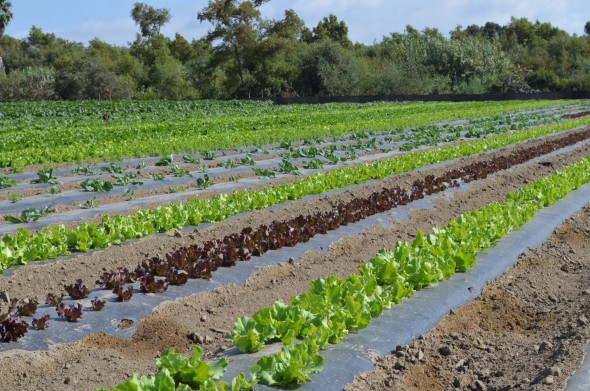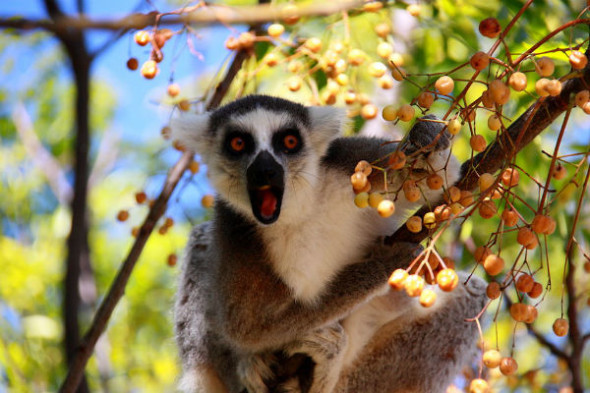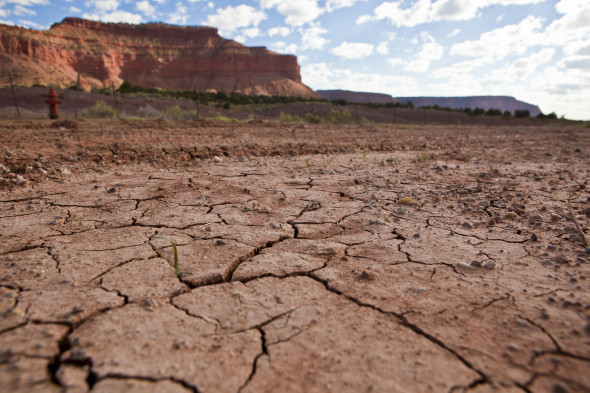Civil Eats | Nov. 3, 2015
When parents spend the extra money to feed their children organic food, it’s often in hope of keeping the overall amount of pesticides in their bodies to a minimum. (If you’ve seen this popular video of the Swedish family that made the switch, you know what we’re talking about.) But a new study by a team of scientists at the University of California, Berkeley suggests that diet is only part of the equation, especially for kids who might be exposed to insecticides at home or pesticides from agricultural fields nearby.
Researchers fed 40 Mexican-American children in Salinas (a rural agricultural area) and in Oakland, California a diet of conventional fruits and vegetables for four days. Then they fed the kids (between the ages of three and six and 20 in each group) a week-long diet of organic produce before returning them to a conventional diet for the last five days. The researchers tested the children’s urine daily for the presence of insecticides and herbicides.
Overall, the results showed that the presence of two kinds of pesticides (organophosphate insecticides and the herbicide 2,4-D) in the children’s bodies decreased after eating organic produce (by 40 and 49 percent in the insecticides and by 25 percent in the herbicide).
But researchers didn’t detect any decrease in the levels of other pesticides (such as pyrethroid insecticides like home bug sprays), according to the paper published recently in the journal Environmental Health Perspectives.
“That could mean that the diet wasn’t an important source of exposure for those pesticides,” Asa Bradman, a researcher at Berkeley’s Center for Environmental Research and Children’s Health who led the study, told Civil Eats.
The study results, he emphasized, point to the importance of considering the cumulative amount of pesticide exposure levels in children from other sources when considering the greater health risks (such as lower IQs or delayed development) to this population—especially those living in areas where pesticides could be applied to farm fields or to areas nearby their schools or homes.
“The Salinas children generally had higher concentrations of pesticides than those living in Oakland,” said Bradman.
Pesticide use near California schools could be a significant factor, as documented by a state health department report last year. It found that Latino children were 46 percent more likely to attend schools with “pesticides of concern” applied nearby than other kids in the state.
Bradman’s previous research found that because several farmworker families often live together in one apartment or house, crowding occurs that can lead to pest infestations and increased pesticide use at home.
The Berkeley study is the first to look at the effects of an organic diet among a Mexican immigrant population and test the effect on insecticide levels. Other studies at Harvard looked at the effect of an organic diet on organophosphate pesticide exposure and found similar results.
“Any results like this are really valuable because there’s so little known when it comes to dietary exposure and pesticide residues,” said Emily Marquez, a scientist at the nonprofit advocacy group Pesticide Action Network. “We also don’t know about how exposure changes due to cultural differences in diet.”
While the Centers for Disease Control asks a sample of the U.S. population about exposure to chemicals in the environment ever year, Marquez says, it’s not clear whether respondents live in urban or agricultural areas. And though FDA and USDA test pesticide levels in food annually, she added, much of the focus is on imported produce.
California is the only state in the U.S. that requires the reporting of pesticide use (though the island of Kauai in Hawaii has a voluntary reporting system that could be expanded statewide later this year). Now the state is moving forward to regulate the application of pesticides near schools. The California Department of Pesticide Regulation, which gathered input this past summer from the public on how it might approach setting these limits, is planning to release draft regulations in December.
Parents and community groups are pushing for a one-mile buffer zone around schools, as well as two-day notice before any pesticides are applied, the Los Angeles Times reports.
And in Iowa, a coalition of farmers and the Pesticide Action Network are trying to get laws introduced that would improve reporting and regulations around pesticide drift.
Despite all of the talk regarding children’s health and safety when it comes to pesticide exposure, both Bradman and Marquez are quick to say that they don’t want to discourage children from eating conventional produce if their families can’t afford organic fruits and vegetables.
“When considering risk from exposure, I wouldn’t say that conventional foods are unsafe,” he added. “If you look at the American diet, there’s definitely great need for more fruits and vegetables and less refined carbohydrates.”
But that doesn’t mean it’s not worth reducing pesticide exposure overall. And Marquez says her organization is working toward that end.
“We can change the agricultural system so that it’s no longer dependent on pesticides,” she said. “One way to do this would be to subsidize farmers to help them convert their land—by improving biodiversity and creating a conservation wetland, for example. That will help them begin to transition away from pesticides.”







